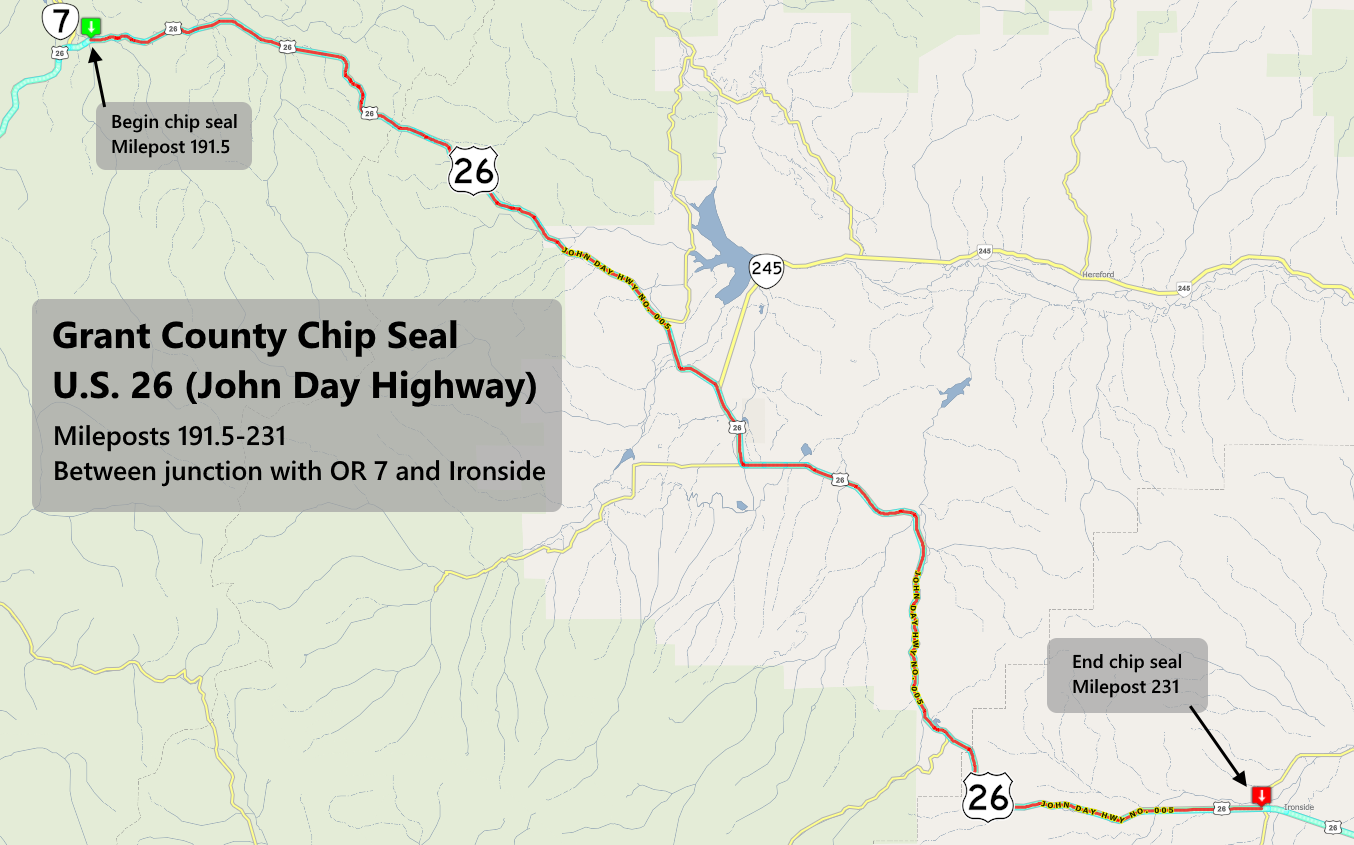Dakota’s final hours: Incident sparks calls for Wallowa County dog-control officer
Published 7:00 am Wednesday, February 21, 2024

- L. McQuead
At about 1:30 a.m. on Oct. 30, 2023, Donna and Adam Roberge were awakened in their Enterprise home by the sound of their dog, Dakota, vomiting.
Dakota, a 4-year-old pit bull-German shepherd mix — “a sweet dog,” Donna said — then had a seizure, jerking and frothing at the mouth.
The Roberges had Dakota from the time the dog was a puppy. But from that moment on Oct. 30, Dakota was never the same sweet dog.
Their family pet “looked at me and didn’t recognize me,” said Adam. The dog then started to lunge at the couple’s daughters, Savannah, 11, and Celina, 14, trying to bite them. The parents made their daughters stay in their bedroom, door closed, for their own protection.
This went on for two hours, an 80-pound dog in the house, parents barricaded inside their bedrooms, their daughters barricaded in theirs.
The incident included fruitless attempts to get law enforcement to respond; eventually, the family’s veterinarian had to sneak into the house through a bedroom window to euthanize the aggressive and ailing dog.
A few weeks later, the veterinarian, Dr. Kala Grover, testified before the Enterprise City Council that the incident showed the need for Wallowa County to have an animal-control officer. The incident also highlighted a continuing discussion about how to control aggressive dogs in the county — and whether local governments can afford a dog-control officer.
Calls in the night
Trapped inside her bedroom, Donna Roberge called 911 and talked to a dispatcher, who told her that an officer would contact them.
Enterprise Chief of Police Kevin McQuead did call her twice. But the ringer on her phone had been turned down too low to hear, so she missed both calls. At 2:14 a.m., she called the dispatcher back and explained that she had missed the calls. Could the officer call her back?
At that point, they said, Adam and Donna expected that an officer would come into their house and put Dakota down.
At 2:20 a.m., McQuead called back. In their seven-minute conversation, Donna said, “basically (he was) telling me there’s nothing he could do.” And McQuead added that he didn’t believe it would be safe to shoot the dog in the house with the children inside.
McQuead said he would handle the situation in much the same way today, but he expressed one regret: He said he wished he had connected with Grover directly to see if she needed assistance.
But on that evening, Donna recalled, this was McQuead’s response to the Roberges: Call your veterinarian. “Tell her no one’s coming, and she’ll (the veterinarian) have to deal with it,” Donna recalled.
Adam was stunned. “I don’t understand why he couldn’t come out to help support” the veterinarian, he said.
Grover gets the call
Grover, a veterinarian at Enterprise Animal Hospital, got the call from the Roberges — her clients — at 1:35 a.m. On speakerphone, they relayed what had happened: Their dog had had a seizure and was not recovering. It was barking at them, lunging, and trying to bite. The dog they once knew, they said, “was not there anymore.”
They had called emergency dispatchers, they told her, but had been told that no Enterprise Police Department officer would be responding because it was an issue for a veterinarian.
As she recalls the events today, Grover said there was so much adrenaline going through her body that morning that there are parts of the morning she doesn’t remember well.
Grover told the owners that she was not comfortable coming to their home with a dog like that: She warned the Roberges that she might need to shoot it — and it’s illegal to discharge a firearm inside the city limits of Enterprise.
She said that since the owners and the dog lived in Enterprise, the Roberges needed to call the dispatcher back and “be firm with dispatch that if I come out there I would have to discharge a weapon.”
The Roberges called dispatch, were told again that no police officers would be responding, and called Grover back at 2:30 a.m.
“Nobody’s coming,” the Roberges told Grover.
Over the phone, Grover could hear the dog barking and slamming against the door.
“OK, I’m coming,” Grover said. “I’ll be there as soon as I can.”
First, she had to go by the Enterprise Animal Hospital to grab supplies. At the clinic, she picked up dog food to put the euthanasia medication in, syringes, needles and a rabies pole, a long pole with a loop on the end that tightens around the animal’s neck. The pole is often used with animal control situations to control aggressive or potentially rabid animals.
From her home, she took her 9 mm pistol.
When she arrived at the owners’ home, she called the Roberges from outside. She knew the dog would stop her from entering through the front door.
So she crawled through the owners’ bedroom window. She opened the bedroom door a crack to assess the situation, and saw immediately that there had been no need to bring the dog food.
“The dog wasn’t interested in food at all,” she said.
She’s still not clear what happened to Dakota — tests later ruled out rabies. Grover said she suspects the cause of the animal’s initial seizure may have been a brain tumor. In a post-seizure situation, animals may suffer blindness and confusion.
“Pets can’t tell us,” she said. Dakota could have been in pain. The dog, usually friendly, “wasn’t focused, and was going toward noises,” she said.
Adam and Grover managed to get the dog caught on the rabies pole so he couldn’t get to her. Grover stabbed Dakota three times with sodium pentobarbital until the animal was euthanized.
The owners came out with a blanket to cover their pet and to say goodbye.
Grover and the husband carried the dog’s body to her car. It was 3:30 a.m.
Later that morning Grover removed the dog’s head to send it to the local public health authority for rabies testing. The test came back negative.
‘It’s a safety factor’
Police Chief McQuead has a similar recollection of the night’s events, and he outlined his reasons for not having an officer respond to the house. He added that he knows the Roberges.
McQuead said that, under state law, it’s illegal for a city or county facility or humane society to allow a dog or cat to be destroyed, “except by lethal injection of sodium pentobarbital or other substance.” Oregon state laws add that if a dog poses an imminent threat to human or animal life, “a reasonable and appropriate alternative may be used.”
Another of McQuead’s concerns was using a firearm to shoot the family’s pet, in their home, in front of or in close proximity to the children, causing them further trauma.
Finally, he noted, had the dog been shot in the head, this would have precluded testing it for rabies.
He said he explained his concerns to the owners and referred them to Grover that night, but he and Grover never connected — a missed connection which he regrets.
He discussed the incident afterward with Grover and now thinks he would have handled the situation differently and worked to get more support to the veterinarian, possibly responding to the scene and offering assistance. “It was a breakdown in communications,” he said. If they had connected, and if she had requested help, he or another officer would have responded.
“It was a really strange call,” he said. “It was a very traumatic day for the family. It wouldn’t have made it better by shooting the animal.”
Ultimately, he said, “it’s a safety factor.” The safety of family members and of neighbors all have to be considered before deciding to use lethal force, he said.
Aggressive dogs
The issue of aggressive, uncontrolled dogs is a rising issue for veterinarians nationwide, Grover said. She said veterinarians and technicians are injured, maimed, and even killed in the United States on a monthly basis. Some of the problems related to aggressive animals can be attributed to a lack of socialization or training, she said.
And veterinarians aren’t equipped to handle aggressive or uncontrolled animals, she said.
“Vets here don’t have protective equipment or training,” she said, to handle aggressive or uncontrolled animals. The lack of a dog-control officer in the county compounds the issue, she said.
Would a dog-control officer have helped in this situation?
“Immensely,” Grover said.
Grover said she wants to see a committee formed to address the issue of aggressive and uncontrolled dogs in the community — and spoke to the Enterprise City Council on Nov. 13 about the issue. She wants to see county ordinances that address licensure and how those laws are enforced, even requiring proof of a rabies vaccination.
(In Oregon, a dog is required by law to be vaccinated against rabies by the age of 6 months or when it has an adult set of canine teeth, whichever comes first. In other words, if a Great Dane has a full set of adult canine teeth at 4 months, the animal must have a rabies vaccination.)
“I want to see discussions” about the issue, she said. “What do we do when we see them (an aggressive dog) bite another dog? Who do we call in the middle of the night when there’s an aggressive dog?”
Enterprise City Administrator Lacey McQuead (who is Kevin McQuead’s wife) said she has not received any updates on planned discussion of the issue, nor has she received further requests for public discussion or comments at any future meeting. She added that it is up to the council committee that oversees the Police Department to decide on next steps and said she believes the committee will meet within the next month.
In a search of its records, the Wallowa County Sheriff’s Office found that it received approximately 30 dog calls last year, most of which had been reported as a “nuisance in one form or another.”
Police Chief McQuead said he’s seen an increase throughout Enterprise of calls involving nuisance dogs and dogs at large. State law describes a dog as a public nuisance if it, for example, chases cars or people, damages or destroys property, scatters garbage, or disturbs any person by frequent or prolonged noises.
There is a system for law enforcement to handle nuisance dogs or dogs at large. If someone calls the police to report a dog they believe is a nuisance, an officer will contact the complainant. If the person knows the owner of the dog, the officer or the person can contact the owner. If the officer witnesses the dog doing damage, it is a violation and the officer writes a description of the incident in a report which goes to the district attorney for review for possible legal action.
The Roberges are not the only people in Wallowa County who have experienced aggressive or uncontrolled dogs. Take, for example, the experience of Sharm Daggett.
Daggett, who lives on Hurricane Creek Road, owns a small Yorkshire terrier named Tucker. Last summer she had been doing chores in her barn and was walking back to her house to change her clothes and shoes. Tucker, who goes everywhere with her, had accompanied her to the barn. On the way back to the house, Tucker spotted a neighbor gardening and went for a visit. Daggett said she called the little dog, but he didn’t return. Thinking nothing of it, she went inside.
Soon the phone rang. It was the neighbor telling her Tucker had been attacked by two pit bulls. The dogs also had bitten the neighbor as he was trying to protect Tucker. The neighbors’ hands and forearms were also covered in blood from the bites he received from the dogs trying to get to Tucker. Daggett raced Tucker to the veterinarian.
Since she lives outside the city limits of Enterprise, she called the Wallowa County Sheriff’s Office. She said she didn’t immediately hear back from the Sheriff’s Office. A deputy eventually talked to her and said he would try to locate the dogs’ vet to check on their vaccination records. Eventually, he was able to confirm that the dogs’ vaccinations were current — but because the deputy hadn’t witnessed the fight, no charges were filed.
Tucker survived the encounter.
Wallowa County Undersheriff Billy Wells said the county gets a lot of calls regarding nuisance animals. He said about a quarter of the time, by the time the deputy is able to respond, the animal is not able to be located or has been contained.
He said he tries to get a dog acting aggressively on video as evidence for a potential court case.
“We get a lot of dog calls. We really do. (There) seems a lot going on with dogs,” he said.
Funding issues
It’s been at least two decades since Wallowa County had a dog-control officer. (The county tax bill does include a line for an “Animal Control” officer, but that person deals with critters such as a skunk under someone’s porch or a nest of raccoons in an attic.) That animal control money does not pay for uncontrolled or aggressive dog problems.
And Wallowa County Commissioner Susan Roberts said there’s no money in the county budget for a dog-control officer.
She said it would take “about $60,000 if the county hired a full-time (animal control officer) — $40,000 for (salary) and $20,000 for a benefit package — it’s a ballpark figure,” Roberts said.
Then there is the cost for equipment. It would take “a small pickup, cages and all the stuff — another $45-50,000 to outfit the position,” she said.
The county does have money budgeted — $3,675 — for dog control in its 2023-24 budget. But that money goes to pay the bills, including utilities, for the dog-impound facility off Highway 3 by the Double Arrow Veterinary Clinic.
“It would be nice if the county had funds to operate an animal control officer,” Roberts said. “I understand people’s concerns. The funding is just not there.”
Everyone interviewed for this article agreed Wallowa County has a need for a dog control officer, if the funding were available.
Wells said he can see the need for at least a part-time position. “I agree. There’s a need for it,” he said.
“I see a need,” McQuead said. “I believe the community sees a need. Someone who could work hand-in-hand with the vets. It has to be at the county level to be effective. If we get dog control, that would be cool.”
The Roberges agree.
Asked if having an animal control officer could have helped in their situation with Dakota, Adam replied, “(We) should have one in this area. (There should be a) system in place to handle these calls.”
Adam Roberge said he thinks all the responsibility should not be just on the veterinarian for calls such as this.
Donna said she would like to see “more involvement with the police to help in these situations, not put it off on someone else to handle it.”
As for Grover, she hopes the incident leads to continued discussion in the community about having an animal-control officer.
“I want this to be a rallying cry for this community to deal with this problem,” she said.
HUMANE SOCIETY HEAD:
OWNERS ARE RESPONSIBLE FOR THEIR DOGS
The Wallowa County Humane Society also has an interest in the issue of aggressive and uncontrolled dogs in the community.
Carol Vencill, Humane Society president, said in the years she has been training and working with dogs she has seen “just a handful of dogs that are vicious.”
“A fair percentage of dogs I deal with have problems due to lack of training and socialization,” she said. She added that some people encourage their dogs (to act vicious), “because they think it’s cute. It’s always the people’s fault.”
Vencill said veterinarian Kala Grover’s experience — called to a client’s house after midnight to deal with a dog that turned aggressive after suffering a seizure — “just wasn’t right.”
“She shouldn’t have had to be there by herself,” without assistance from an animal-control officer. “Things could have gone terribly wrong.”
Asked if Wallowa County needs an animal control officer, Vencill said, “We really do. Even if it’s part-time. An animal-control officer can save a lot of work for law enforcement, the Humane Society, and the public in general.”
But when it comes to a vicious or uncontrolled dog, she said it comes down to the owner taking responsibility for their dog’s behavior and protecting the public, and their veterinarian, from their dog if they know it has behavior issues.
Vencill said, “It goes back to owners taking responsibility. If (you) know (your) dog can cause trouble (you) need to take extra precautions. Not everybody’s dog is friendly. There’s nothing like a muzzle.”
Enterprise Police Chief Kevin McQuead and Wallowa County Undersheriff Billy Wells echoed Vencill’s sentiment about the importance of owners taking responsibility for their dogs.
It’s about responsible dog ownership, said McQuead.
“Situations happen,” he said. “Dogs get loose. At the same time, some people just have to be more responsible. Some dogs just don’t belong in town.”






